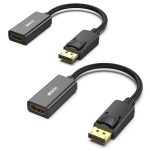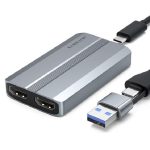The PlayStation 5’s DualSense controller revolutionizes gaming with its immersive haptic feedback and adaptive triggers. But, like any wireless controller, it requires regular charging to keep the action going. So, what charger does a PS5 controller use? Understanding the charging options and specifications ensures you’re always ready for your next gaming session. Let’s delve into the world of PS5 controller charging and explore the various ways to keep your DualSense controller powered up.
Contents
- 1 The USB-C Connection: The Primary Charging Port
- 2 Charging from the PS5 Console: The Direct Approach
- 3 Dedicated Charging Stations: Streamlining Your Setup
- 4 Beyond the Console: Exploring Alternative Charging Solutions
- 5 Maximizing Battery Life: Tips and Tricks
- 6 Troubleshooting Charging Issues: Overcoming Common Problems
- 7 Charging on the Go: Portable Power Solutions
- 8 Third-Party Chargers: Expanding Your Options
- 9 Caring for Your Controller’s Battery: Maximizing Longevity
- 10 Conclusion: Keep the Game Going
The USB-C Connection: The Primary Charging Port
The PS5 controller features a USB-C port, a versatile and increasingly common connector in the world of electronics. This port serves as the primary gateway for charging your controller.
Included Cable
The PlayStation 5 console comes bundled with a USB-C to USB-A cable. You can use this cable to connect your controller directly to the console for charging.
USB-C Compatibility
The beauty of USB-C is its versatility. You can also use any other USB-C cable to charge your controller, whether it’s a cable from your smartphone, tablet, or other USB-C compatible devices.
Charging While Playing
One of the advantages of wired charging is the ability to continue playing while your controller charges. Simply plug in the cable and keep gaming without interruption.
Charging from the PS5 Console: The Direct Approach
The most straightforward way to charge your PS5 controller is by connecting it directly to the console.
-
Rest Mode Charging: Even when your PS5 is in Rest Mode, its USB ports remain active, allowing you to charge your controllers while the console is not in use.
-
Front USB Ports: The PS5 console features two USB ports on the front, easily accessible for connecting your controller.
-
Charging Time: Charging a completely depleted DualSense controller typically takes around 3 hours when connected to the console.
Charging Tips:
- Secure Connection: Ensure the USB-C cable is securely plugged into both the controller and the console’s USB port.
- Rest Mode Settings: Check your PS5’s Rest Mode settings to ensure the USB ports are enabled for charging while the console is in Rest Mode.

Dedicated Charging Stations: Streamlining Your Setup
For a more organized and aesthetically pleasing charging solution, consider investing in a dedicated PS5 controller charging station or dock.
-
Multiple Controller Charging: These charging stations typically accommodate two or more controllers, allowing you to charge multiple controllers simultaneously.
-
LED Indicators: Many charging stations feature LED indicators that display the charging status of each controller, letting you know when they’re fully charged and ready to use.
-
Space-Saving Design: Charging stations often have a compact and space-saving design that keeps your gaming area tidy and organized.
-
Aesthetic Appeal: Some charging stations boast sleek and modern designs that complement the aesthetic of your PS5 console and gaming setup.
Choosing a Charging Station:
- Number of Controllers: Consider how many controllers you need to charge simultaneously. Most charging stations accommodate two controllers, but some offer space for up to four.
- Charging Speed: Some charging stations offer faster charging speeds than the console’s USB ports, allowing you to get back to gaming quicker.
- Features: Look for additional features like overcharge protection or a built-in fan to prevent overheating.
Beyond the Console: Exploring Alternative Charging Solutions
While charging directly from the PS5 console or using a dedicated charging station are common methods, alternative charging solutions exist for greater flexibility and convenience.
-
Wall Chargers: You can utilize a standard USB wall charger with a USB-C cable to charge your PS5 controller. Ensure the charger provides adequate power output, ideally 5V/1.5A or higher, for efficient charging.
-
Portable Chargers: Also known as power banks, portable chargers offer on-the-go charging for your controller. Choose a power bank with a USB-C output and sufficient capacity to fully charge your controller multiple times.
-
Laptop or PC USB Ports: In a pinch, you can also charge your PS5 controller by connecting it to a USB port on your laptop or PC. However, charging speeds might be slower compared to dedicated chargers or wall adapters.

Alternative Charging Tips:
- Check Compatibility: Ensure any third-party chargers or cables you use are compatible with your PS5 controller and provide the correct voltage and current output.
- Avoid Cheap or Uncertified Chargers: Using low-quality or uncertified chargers can damage your controller’s battery or even pose a safety hazard. Invest in reputable brands and products.
Maximizing Battery Life: Tips and Tricks
Optimizing your controller’s battery life ensures longer playtime and reduces the frequency of charging.
- Dim the Light Bar: The DualSense controller’s light bar can consume battery power. You can dim or turn off the light bar through the console’s settings to extend battery life.
- Reduce Trigger Effects Intensity: The haptic feedback and adaptive triggers, while immersive, can also drain the battery faster. Adjust their intensity in the console settings to conserve power.
- Turn Off the Controller When Not in Use: When you’re not using the controller, turn it off completely to avoid unnecessary battery drain.
- Avoid Extreme Temperatures: Store your controller in a cool, dry place away from direct sunlight or heat sources. Extreme temperatures can negatively impact battery performance and longevity.

Troubleshooting Charging Issues: Overcoming Common Problems
Even with the right charger and proper usage, you might occasionally encounter charging issues. Let’s explore some common problems and their solutions.
-
Controller Not Charging: If your controller isn’t charging, double-check the cable connections, ensure the charger is plugged in and working, and try restarting your console.
-
Slow Charging: If your controller is charging slowly, it could be due to using an underpowered charger or a faulty cable. Try a different charger or cable, or connect the controller directly to the console for faster charging.
-
Overheating: If your controller or charger becomes excessively hot during charging, disconnect them and let them cool down. This could indicate a problem with the charger, cable, or the controller’s battery.
-
Battery Not Holding a Charge: If your controller’s battery drains quickly or doesn’t seem to hold a charge, it might be time for a replacement. Consult the manufacturer’s support or a qualified technician for battery replacement options.
Charging on the Go: Portable Power Solutions
For gamers who are constantly on the move or want to ensure uninterrupted gameplay even when away from their console, portable charging solutions are a must.
-
Power Banks: Power banks, also known as portable chargers, are compact and convenient devices that store electrical energy and can be used to charge various devices, including your PS5 controller. Simply connect your controller to the power bank using a USB-C cable, and you’re good to go.
-
Charging Cases: Some third-party manufacturers offer charging cases specifically designed for PS5 controllers. These cases not only protect your controller but also house a built-in battery that can charge your controller on the go.
-
Car Chargers: If you frequently travel or have long commutes, a car charger with a USB-C port can be a lifesaver. It allows you to charge your controller while on the road, ensuring you’re always ready for your next gaming session.
Choosing a Portable Charger
-
Capacity: Consider the capacity of the power bank or charging case, measured in milliampere-hours (mAh). A higher capacity translates to more charge cycles for your controller.
-
Portability: Choose a compact and lightweight charger that’s easy to carry in your bag or backpack.
-
Charging Speed: Some portable chargers support faster charging speeds, allowing you to power up your controller more quickly.

Third-Party Chargers: Expanding Your Options
While the official Sony DualSense charging station is a reliable option, several third-party chargers offer additional features or cater to specific needs.
-
Multi-Controller Charging Stations: These stations can charge multiple controllers simultaneously, making them ideal for households with multiple gamers or for those who frequently host gaming parties.
-
Wall Chargers with Multiple Ports: Wall chargers with multiple USB ports can charge your controller and other devices like your phone or headset at the same time.
- Wireless Charging Pads: Some third-party manufacturers offer wireless charging adapters or cases that enable wireless charging for PS5 controllers. This eliminates the need for cables and offers a sleek and convenient charging solution.
-
Safety Certifications: Ensure any third-party charger you choose is certified and meets safety standards to protect your controller and prevent electrical hazards.
-
Compatibility: Double-check that the charger is compatible with the PS5 controller and offers the correct voltage and current output.
-
Reviews and Ratings: Consult online reviews and ratings to gauge the performance and reliability of different third-party chargers.
Caring for Your Controller’s Battery: Maximizing Longevity
Proper care and maintenance of your PS5 controller’s battery can significantly extend its lifespan and ensure optimal performance.
-
Avoid Overcharging: While modern chargers have built-in overcharge protection, it’s still a good practice to avoid leaving your controller plugged in for extended periods after it’s fully charged. This can prevent unnecessary stress on the battery and prolong its lifespan.
-
Partial Discharges: Avoid fully depleting your controller’s battery before recharging. Lithium-ion batteries, like those in the DualSense controller, perform best with partial discharges and recharges.
-
Storage: When not in use for extended periods, store your controller with a partial charge (around 50%) in a cool, dry place away from direct sunlight and extreme temperatures.

Conclusion: Keep the Game Going
A reliable and efficient controller charger is an essential part of any PlayStation 5 gaming setup. By understanding the charging options, prioritizing safety and compatibility, and adopting battery-saving practices, you can ensure your DualSense controller is always ready for action, allowing you to immerse yourself in the world of gaming without interruptions.
Remember, a well-maintained controller with a healthy battery enhances your gaming experience and ensures countless hours of fun and excitement.


